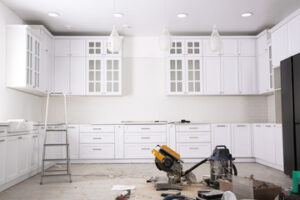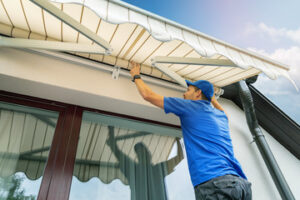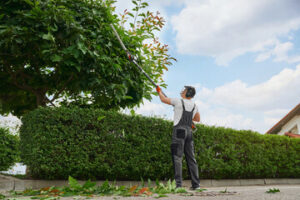Kitchen Remodel Near Me is one of the most valuable home improvement projects that homeowners can undertake. With benefits including enhanced functionality, increased aesthetic appeal and substantial returns on investment, it’s easy to see why!

Be careful not to over-customize your kitchen, as this can limit its marketability to a broader set of potential buyers in the future. Work with a remodeling professional to find the right balance of style and functionality.
Cabinets are the foundation of any kitchen, and they play an essential role in both the functionality and aesthetics of your kitchen. Cabinets come in a variety of styles, sizes, and colors. They also offer a wide array of features, including custom storage solutions like pull-out spice racks, wastebasket roll outs, and cutlery drawers. These features can add up quickly, so it’s important to keep them in mind when planning your budget.
Cabinet color trends are always changing, but neutral shades remain a popular choice. White cabinets are especially popular, and they can make even the smallest spaces feel brighter and bigger. However, if you’re looking for something more unique and bold, shaded greens are currently rising in popularity, and they can add a beautiful pop of color to any kitchen.
The term “cabinet” is used more often in the United States, but some retailers and manufacturers use the word “cupboard.” Cabinets are typically mounted to the wall and serve as a place to store your bowls, plates, serving dishware, and other kitchen items. They’re a great way to keep your countertops clear and provide easy access to small appliances, utensils, and cooking equipment.
When shopping for new cabinets, you’ll want to consider their material and build methods. Lower-end cabinets are usually made from MDF or particleboard covered with melamine or thermofoil, while more expensive models utilize plywood. Wood veneers are a better option than solid wood, but they can be more expensive and harder to work with.
If you’re remodeling a small kitchen, you may choose to install open shelving instead of cabinets. This trend is gaining popularity, and it can be a great way to showcase your beautiful dishes and cookware. However, it’s important to keep in mind that empty shelves can look bare and unorganized, so you’ll need to do a thorough kitchen declutter before you start installing them.
Countertops
Countertops are the workhorses of your kitchen and play a big role in the overall design of the room. They must be durable enough to withstand heavy use, but they also need to be attractive and blend well with the cabinets and flooring.
There are many different countertop options available, and it depends on your budget and style preferences which one you choose. Granite countertops are popular and come in a wide variety of colors, including neutral tones that can complement almost any cabinet color. Marble is another beautiful option, but it is softer than granite and can scratch or stain easily. However, it is heat-resistant, which makes it a great choice for kitchens where food preparation takes place.
Solid synthetic countertops, made of acrylic and resin, offer a huge selection of looks, including some excellent dupes for natural stones. They are more affordable than stone and are easy to clean, but they do not resist heat as well as other materials. They can be thermoformed into a wide variety of shapes and can integrate the backsplash, sink and other features into a seamless whole.
Wood offers a natural, traditional look that fits in with most kitchen styles, but it scratches, dents and wears under kitchen conditions. However, it can be refinished to restore its beauty and is an economical option. Wood can be integrated into an island for a bar-height counter and extra storage space, and power outlets can be built in to provide flexibility for cooking, dining and entertaining. Recessed ceiling fixtures and pendants can be installed to brighten the workspace and highlight the countertops, backsplash and cabinetry. They can also be placed over the islands to provide ambient lighting and avoid shadows on the countertops and food prep areas.
Flooring
Whether your goals are to create a more pleasant go-to space or increase your home’s value, kitchen upgrades can make a significant difference. However, it’s important to set a realistic budget and only change what you can afford to without overcapitalizing. This ensures that your investment improves your quality of life while still adding to the overall value of your home.
Choosing the right flooring is an important consideration, as it can make or break your design aesthetic and overall cost. It’s also a good idea to consider how the flooring will hold up in your kitchen over time. It’s best to choose a product that will be durable and stand up to heavy traffic. Wood floors are a popular option that add value and beauty to any kitchen. However, you should be aware of the cost of hardwood versus manufactured wood (sometimes called laminate).
A well-executed kitchen remodel can add 50-70% back to your home’s value. It’s the highest return on investment among all home improvements, and it can help you sell your home faster.
It’s a good idea to work with a Kowalske designer during the remodel process. This will give you the chance to discuss all product and cost options before your project starts. Our designers are trained to provide you with the information you need to make an educated decision about your new kitchen.
In this era of environmental consciousness, incorporating energy-efficient features during your kitchen remodel can further increase your ROI. This includes refinishing existing wood floors and choosing energy-efficient appliances and lighting. This can appeal to environmentally conscious buyers and contribute to long-term savings in utility costs. Additionally, installing a smart home feature like a smart refrigerator can add an extra layer of interest to your kitchen and boost the overall value of your home.
Lighting
The lighting choices you make for your kitchen can have a significant impact on its atmosphere. While some types of lighting serve a clear utilitarian purpose, others offer a more subjective appeal. For example, a dimming light can set a mood that influences the overall atmosphere of the room, while bright or colorful LED lights can energize and encourage you to cook and entertain.
Ambient lighting is a great way to bring a soft, cozy glow to the kitchen at the flick of a switch. This type of lighting is often recessed or hidden so it doesn’t interfere with your kitchen style. This type of lighting is best used in combination with other types of lighting, such as task and accent, so you can control the amount of brightness to suit different scenarios.
Task lighting is an important element of any kitchen. It eliminates shadows and illuminates work surfaces so you can complete precise tasks like cooking or cleaning with ease. It’s also crucial to ensure your safety while working in the kitchen. Task lighting typically includes recessed can lights above work surfaces, pendant or track lights over islands or dining areas, and under-cabinet lighting.
Accent lighting is a common choice for kitchens to highlight decorative elements, such as artwork or crockery on display. It’s also a great option for highlighting the finish of cabinets or adding depth to open shelves. This type of lighting is usually more decorative and functional than ambient lighting, but the options are limitless.
The height of your ceilings can influence the type of lighting you choose. Low ceilings work best with flush-mount or recessed fixtures, while higher or vaulted ceilings can accommodate chandeliers and longer pendants. You may also want to consider maintenance and cleaning when choosing your kitchen lighting. For example, fabric drum lampshades or pendants can quickly become greasy and sticky, so you should opt for nonporous materials.
Appliances
Appliances are more than just a utilitarian kitchen component; they play a key role in the functionality of your space. If your appliances are on the older side and not working as efficiently, it may be time to invest in a kitchen remodel to upgrade to more efficient, smarter models. Not only will this improve your cooking and storage capabilities, but it can also enhance the overall look of your kitchen.
A new refrigerator, dishwasher and range are typically the largest purchases during a kitchen remodel. When choosing appliances, keep in mind a few factors including quality, brand and style. Typically, more mainstream brands offer reliability and performance at an accessible price point ideal for the average kitchen remodel. On the other hand, luxury brands like Sub-Zero and Wolf offer advanced features and sleek design that can transform your kitchen into a culinary haven.
Lighting is another important investment in a kitchen remodel. However, it is not usually a major cost factor as most kitchens utilize both general (overhead) and task lighting (undercabinet or directly over islands) in some combination. Lighting costs rise only when you add upgrades such as dimmable LED or designer fixtures.
Other kitchen remodel upgrades include a hidden microwave that blends with the cabinetry, a warming drawer for savory dishes, or a beverage center equipped with a built-in fridge and ice machine. Besides the functional improvements, these upgrades can also elevate your home’s design and increase its resale value. Another benefit is increased storage for all those cooking-related knick-knacks and secret ingredients. Lastly, replacing old appliances with updated models brings the kitchen up to current safety codes and standards. For example, older kitchens often lack circuit interrupter outlets that can result in dangerous electrical problems.

